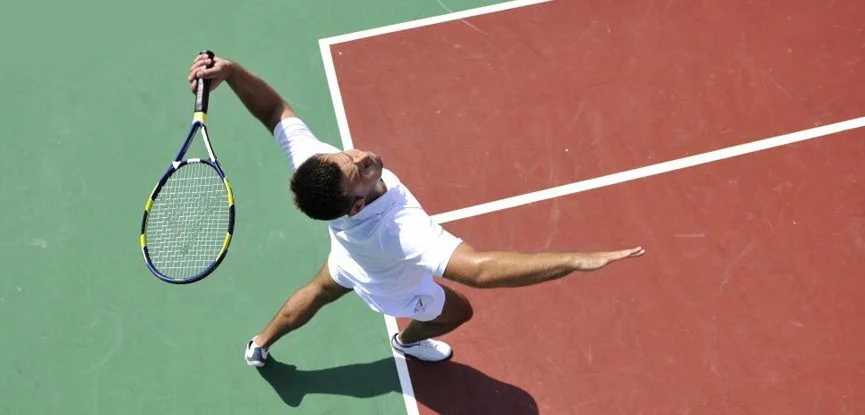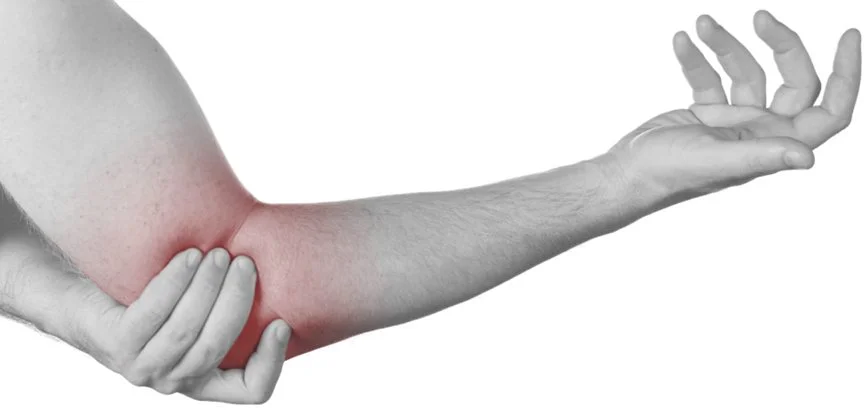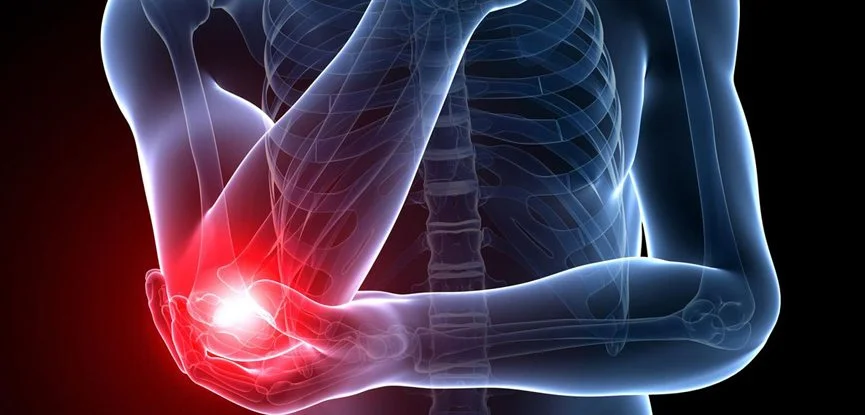Be in the Know
Guided by industry experts, expand your sports massage knowledge our in-depth career articles and guides
Lateral epicondylitis, or tennis elbow, is a very common disorder of the lateral proximal forearm that affects anybody who places excessive and repetitive stress on the wrist extensors, flexors, supinators or pronators.
Traditionally, tennis elbow, hence its name, was linked to higher impact movements like hitting a tennis ball with a racquet. This movement pulls quickly on the extensor muscles and their tendons causing tendon and muscular injury.

It’s a condition that is far from limited to those who play tennis or other racquet sports. It can affect anyone where the use, and overuse, of the forearm muscles is considered strenuous. This could apply to a range of actions including cleaning and painting, right through to knitting.
Nowadays tennis elbow is becoming more and more common because of the increased time we spend working at a desk, with typing on a keyboard and using a mouse being the biggest aggravators.
It is perhaps less obvious that these movements are causing injury, despite their repetitive nature, because using a mouse is relatively low impact compared to a tennis serve. However, these movements cause unseen stiffness and soreness in the muscles, causing them to fatigue. It is at this point that the characteristic pain of tennis elbow really presents itself.
The most obvious and apparent symptom of lateral epicondylitis is a pain emanating from the outside of the elbow. For day-to-day suffers, pain may be felt when lifting or bending the arm, gripping small objects (such as a pen or mouse), and twisting the forearm (for example when turning a door handle).
Sports-related lateral epicondylitis is seen as a tendon problem because of high impact movements, such as a tennis serve, result in micro and macroscopic tears to the tendon. If tennis elbow is a result of low impact, repetitive movements then it is often caused by fatiguing on the muscles, rather than tears in the tendon.

There is a possibility that the condition could be misdiagnosed and if this occurs it will take longer to get to the root cause of the problem and increase recovery time. If someone has hurt their tendon, the person will suffer debilitating pains in the elbow and wrists quickly after the movement that induced the injury.
With tendon injury, there is usually a direct link between the activity and the resultant pain. The classic simple test for tendonitis is to simply pull firmly on the tendon. In the case of tennis elbow, this means resisted extension from flexion. To perform the test the wrist needs to be flexed and held in place. If, when it is straightened, there is pain it is probably tendonitis. The condition is usually broken down into two categories; muscular tennis elbow or tendonitis tennis elbow.
Looking firstly at tendonitis, massage therapists are often seen as a popular choice for dealing with this area. A common technique is frictions, localised soft tissue manipulations using fingers and thumbs. Frictions can be performed without seeking professional help, but the average person will not know what to look out for or how to deliver the treatment which is why it is best to use a qualified sports massage therapist.

There is also a possibility that deep massage, stretching and strengthening of vulnerable tissue can perpetuate an injury, so the person applying the treatment should really have experience in what they are doing. While a massage therapist is just one professional that may be consulted to treat tennis elbow, they can be an extremely effective choice as most forms of treatment will involve some form of massage.
For example, over recent years a transverse friction massage for tendonitis has been the most widely used form of treatment. The theory behind frictions is that a therapist is providing stimulation in order to move tissue fluids in the hope of inducing connective tissue repair.
The massage therapist will scrub the fibres of the tendon by rubbing gently back and forth over the inflamed tendon at the point of greatest tenderness. If the sensitivity doesn’t subside over a day or two then the patient either doesn’t have tendonitis or the tendon isn’t responding to frictions.
If the tenderness does disappear the massage therapist will keep applying more pressure until there is no tenderness left.
The second form of tennis elbow relates to muscular tightness and is by far the most common form of tennis elbow. Most forearm pain will be caused by a spot just beyond the elbow where all the muscles on the back of the forearm converge into a single thick tendon called the common extensor tendon. At the point where the muscles converge lies one of a crucial myofascial hotspot for tension.
The muscles afflicted in tennis elbow are on the back of the forearm and are responsible for lifting the fingers and wrists and are constantly aggravated by computer usage they can be seen moving under the skin of the arm whilst moving fingers across a keyboard. In writing, typing, and using a mouse, these muscles must hold the wrist up and keep it stable, so the fingers can work constantly.
There is one very important trigger point in cases of tennis elbow which when identified and treated will cure most cases. The massage therapist will look for the bony knob on the outside edge of the elbow. This is the point on which all the muscles on the back of the arm converge.
The place the therapist will look to work on is a little further down where the tendon turns into muscle. This is the trigger point that causes most issues with tennis elbow. Once this is located the therapist will use trigger point release therapy to break down the tension in the muscle and let out any toxins trapped inside.

A common technique here involves pressing with both thumbs into the knots or scar tissue by applying deep pressure using both thumbs at the centre the muscle. When the muscle feels like it is loosening off a circular motion is used to break down smaller adhesions and scar tissue.
After a short break, if any lumps, sensitive spots are still felt, a constant and deep pressure should be re-applied to the trigger point until it subsides completely.
After just one treatment there should be a big difference in the condition of the trigger point and a reduction in symptoms. If there isn’t it could be that the condition is due to some inflammation of the tendon itself.
Tennis elbow relates to injury of the extensor muscles or their tendons. In the case of tendon trouble, the road to recovery is likely to be a long one as tendons do not receive enough oxygen to repair themselves quickly. Added to this is the issue that tendons are sensitive once hurt so any treatment that is not aiding rehabilitation is likely to cause further injury.
Muscular issues are most likely to result from a build-up of trigger points and are easily treated if the correct trigger spot can be identified. If this spot is not found, the prognosis is a long recovery. For both these reasons, it is essential anyone suffering from tennis elbow seeks the help of a trained sports massage therapist who is able to treat these conditions. Getting the right professional involved early will save months of recovery time.
If you’re interested in becoming a qualified sports massage therapist, HFE have a range of sports massage courses available.
Back to articlesAnd discover more about the world of massage therapy
Great news, you're on the list...